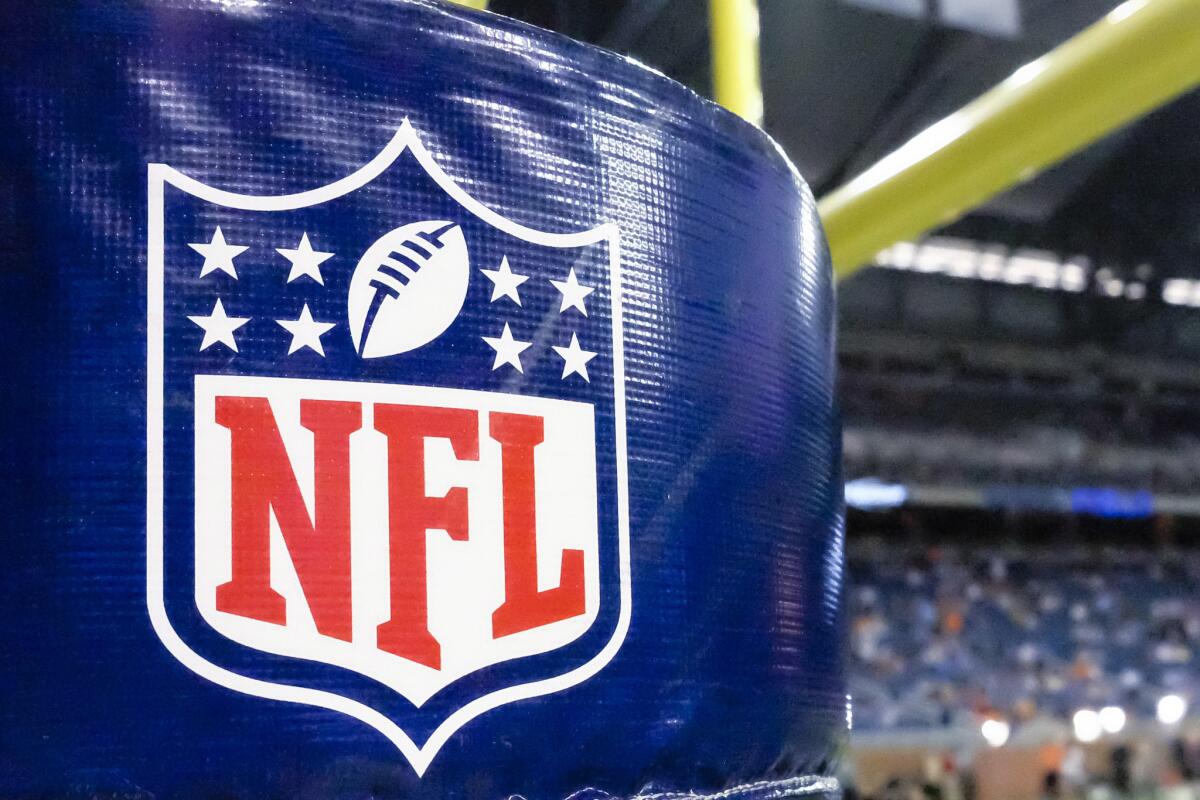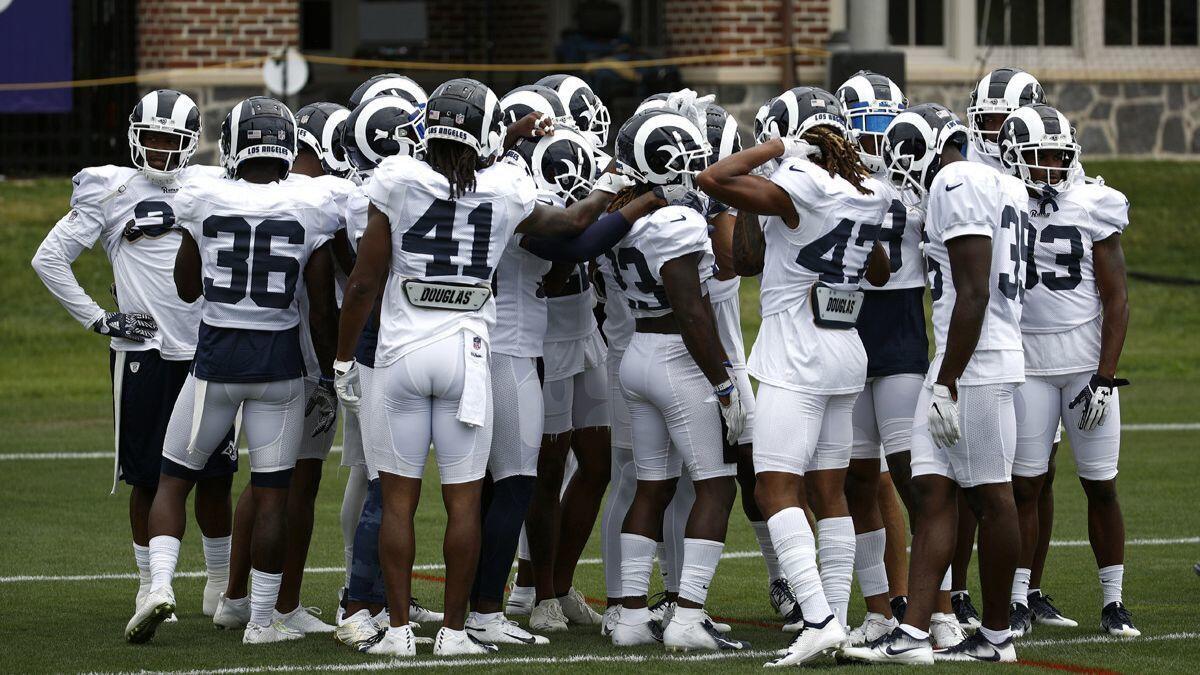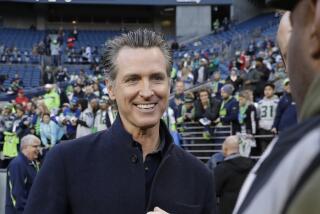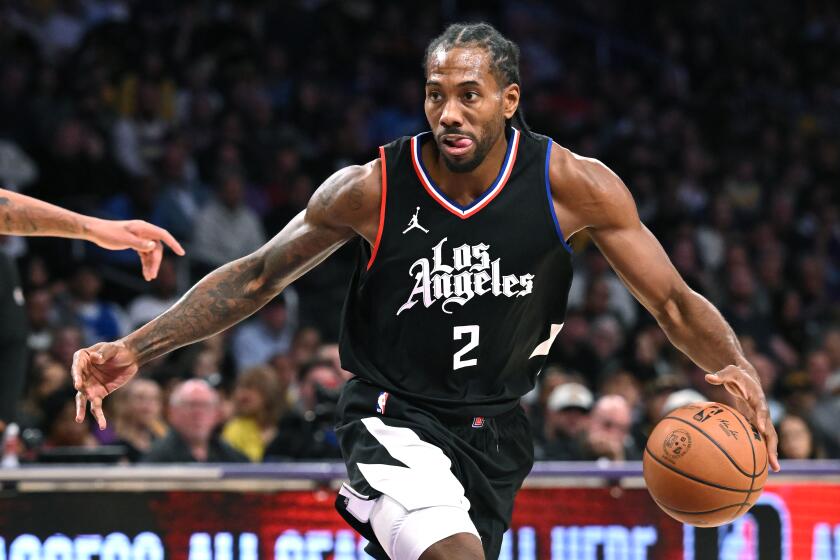Startling jump in NFL player claims for Parkinson’s and ALS pushes payout projections past 65-year total in 18 months
Before Chris Borland decided to walk away from the NFL in 2015, he spent a season learning about the long-term risks of the sport, reading books and talking to neuroscientists.
Nobody mentioned Parkinson’s disease. A single article, he said, referred to amyotrophic lateral sclerosis, or ALS.
“It was mostly about CTE [chronic traumatic encephalopathy],” said Borland, who retired at age 24 after a standout rookie season as a linebacker with the San Francisco 49ers.
Three years later, the number of players with a Parkinson’s or ALS diagnosis who have applied for and received payments under the NFL’s concussion settlement is significantly larger than projected, raising the possibility that professional football players may be at greater risk of developing the neurodegenerative diseases than previously believed.
In the 18 months since the settlement went into effect, 113 Parkinson’s and 42 ALS claims were filed by former players or their representatives. Of those, 81 Parkinson’s and 30 ALS claims worth a combined $146.5 million either have been paid or approved.
Those figures dwarf projections made in a report commissioned by the players’ lawyers, which estimated that 14 Parkinson’s and 18 ALS claims worth a combined $52.6 million would be paid over the 65-year duration of the settlement. A report commissioned by the NFL predicted 31 paid ALS claims over the settlement’s lifespan; it did not provide specific numbers for Parkinson’s.
Though research has established a link between brain injury and increased Parkinson’s risk — as well as a possible link between playing in the NFL and increased ALS risk — there is no consensus within the scientific community about how repetitive head trauma contributes to movement disorders. As such, scientists are uncertain why the rates of both diseases among retirees enrolled in the settlement are higher than projected.
“Those are startling numbers,” said Dr. Charles Bernick, associate director of the Cleveland Clinic’s Lou Ruvo Center for Brain Health in Las Vegas and the lead researcher of an ongoing, long-term study of the brains of professional boxers and mixed martial arts fighters.
“We really don’t know how much of an increased risk there is for those diseases among retired football players, or in combat sports like boxing. But if repetitive head trauma is a risk factor, we need to understand that. It has major public health implications.”
The approximate rate of Parkinson’s in the general population increases with age, from 41 cases per 100,000 people for ages 40 to 49 to 425 per 100,000 people for ages 60 to 74. For ALS, rates range from 3.8 cases per 100,000 people for ages 40 to 49 to 20 per 100,000 people for ages 70 to 79.
The rate of paid or approved Parkinson’s cases within the group of NFL retirees enrolled in the settlement is 471 per 100,000, while the rate of paid or approved ALS cases is 174 per 100,000.
NFL spokesman Brian McCarthy said that early claim numbers are not necessarily predictive of future claim levels over the settlement’s lifetime.

“ALS and Parkinson’s [diagnosis] are fairly straightforward and are unlikely to trigger concerns about fraud that would slow down the processing of the claims,” McCarthy said. “As a result, a relatively higher percentage of early claims may be attributed to these two conditions.”
The agreement that went into effect in January 2017 covers about 17,200 registered NFL retirees and compensates those diagnosed with particular neurological disorders with payments of up to $5 million. While seeking approval for the settlement in 2014, the NFL and the players’ lawyers submitted reports to a federal judge seeking to demonstrate that the proposed $675-million deal would be sufficiently funded to cover all claims over 65 years. (The league later agreed to pay an unlimited amount in awards.)
The NFL’s report said that it “sought to err on the side of overstating” the number of retirees who would become sick and qualify for awards in order to ensure that the fund wouldn’t run out of money.
Thomas Vasquez, an economic consultant who wrote the players’ report, said in a recent court filing that 80% of the former players eligible under the settlement are participating in the deal, more than the 59% he predicted in 2014.
Even with 100% participation, the report’s previous maximum projections of 31 ALS and 24 Parkinson’s cases over 65 years fall far short of the number of current claims.
Vasquez did not respond to requests for comment.
Most of the ongoing national conversation about brain damage in football has focused on research connecting the sport to an increased risk of developing Alzheimer’s disease, other dementias, and CTE — a neurodegenerative disease linked to repetitive head trauma. CTE is associated with cognitive dysfunction and mood and behavior disorders, and has been found in the brains of more than 100 deceased former NFL players, including Pro Football Hall of Fame members Mike Webster and Junior Seau.
So far, the settlement has paid or approved payment for 67 CTE death claims worth more than $84.5 million, numbers that also are higher than anticipated.
One of the most famous athletes diagnosed with Parkinson’s was Muhammad Ali, who died in 2016 at age 74 after a long battle with the disease. A progressive movement disorder, Parkinson’s produces tremors, impaired movement and slurred speech, and is marked by the buildup of proteins called Lewy bodies in brain cells.

A recent UC San Francisco study that examined the medical histories of nearly 326,000 military veterans over a 12-year period found that individuals who had suffered a previous brain injury were more likely to develop Parkinson’s than those who hadn’t.
“Brain trauma is now being recognized as one of the things that increases the risk [of Parkinson’s],” said Dr. Codrin Lungu, director for movement disorders at the National Institute of Neurological Disorders and Stroke at the National Institutes of Health.
Genetic factors, exposure to rural well water, and certain pesticides and artificial toxins also increase Parkinson’s risk, Codrin said.
“What the [research] papers we have show is a 40% to about 70% increase in risk for Parkinson’s with a history of trauma,” he said. “In addition, we have studies in mice showing that with brain injury, they develop the same degenerative pathology seen in Parkinson’s.”
How that relates to playing football, Codrin said, remains unclear — in part because medical scientists don’t understand the underlying biological causes of Parkinson’s, and in part because little specific research on former players and the disease exists.
In 2012, epidemiologists from the Centers for Disease Control and Prevention examined death certificates from a group of 3,439 NFL retirees who played at least five seasons in the league from 1959 to 1988. The study found that while former players were three times more likely to die from brain diseases such as Alzheimer’s than similar men in the U.S. population, their risk of dying from Parkinson’s was “elevated but did not reach statistical significance.”
Dr. Barry Jordan, the former chief medical officer of the New York State Boxing Commission and a neurologist who has studied repetitive brain trauma in collision and combat sports, said that some of the NFL retirees making settlement claims may be suffering from “Parkinsonism” — not the actual disease, but similar symptoms that can be characteristic of other brain disorders.
A study published in July by Boston University and VA Boston Healthcare System researchers found that contact sport athletes may be at increased risk of developing Lewy body disease, or LBD, a brain disorder that can cause Parkinson’s-like symptoms. Athletes who had played more than eight years of contact sports were six times more likely to have LBD than those who had played eight years or less.
“It’s well known that you can have post-traumatic Parkinsonism,” said Jordan, chief medical officer of the Rancho Los Amigos National Rehabilitation Center in Downey. “We don’t have the epidemiological data to say how much trauma increases the risk.”
The link between brain trauma and ALS is murkier. Also known as Lou Gehrig’s disease, the condition affects nerve cells in the brain and spinal cord and ultimately results in a fatal inability to initiate and control muscle movement.
At least 17 former NFL players are publicly known to have been diagnosed with the disease, including former 49ers receiver and league executive Dwight Clark, who died in June at age 61. Former New England Patriots and Philadelphia Eagles fullback Kevin Turner, who died in 2016 at age 46, was one of the lead plaintiffs in the lawsuit that produced the settlement, a class action brought by more than 5,000 retirees who accused the league of hiding the long-term dangers of concussions and hits to the head.
The 2012 CDC study found that former NFL players were four times more likely to die with ALS than similar men from the general population.
Two years ago, Dr. Ann McKee, a leading CTE researcher, announced at a news conference that an autopsy of Turner’s brain indicated that he had suffered from a severe case of CTE that damaged the motor cortex of his brain and produced the clinical symptoms of ALS before his death.
McKee also said that autopsies of the brains of 16 other athletes diagnosed with ALS, including football and soccer players, indicated that they had CTE.
“Science has not answered all the ways you can get ALS,” said McKee, chief of neuropathology at the VA Boston Healthcare System and director of Boston University’s CTE Center. “It has answered very few. There may be dozens of disease mechanisms that lead to ALS symptoms.”
While nearly 300 Alzheimer’s and dementia claims so far have been denied by settlement administrators — leading the NFL’s lawyers to claim the deal is rife with fraud, and players’ lawyers to argue that the league is obstructing legitimate cases — only nine Parkinson’s and two ALS claims have been denied. One Parkinson’s claim has been withdrawn.
Vasquez projects that the settlement will pay out a total of $1.4 billion, $468 million more than his 2014 estimate. Settlement administrators already have approved $502 million in claims, roughly $100 million more than the NFL’s 2014 actuarial report estimated would be paid out in the settlement’s first decade.
“There is something very wrong here,” said Donald Comrie, a scientific consultant who has worked with the NFL Players’ Assn. and former players who objected to the settlement. “This is a sick population, and they haven’t been properly assessed or informed.”
In 2013, the CDC prepared and distributed a letter to the former players included in its 2012 study, warning them that retirees faced an elevated risk of dying with ALS. Borland, who entered the NFL a year later and said his retirement was “proactive,” said that he never saw it.
“I don’t remember any conversation to related to anything relating to brain trauma while I was playing at any level,” he said. “It was taboo.”
Patrick Hrubey is a freelance writer.
More to Read
Get our high school sports newsletter
Prep Rally is devoted to the SoCal high school sports experience, bringing you scores, stories and a behind-the-scenes look at what makes prep sports so popular.
You may occasionally receive promotional content from the Los Angeles Times.






